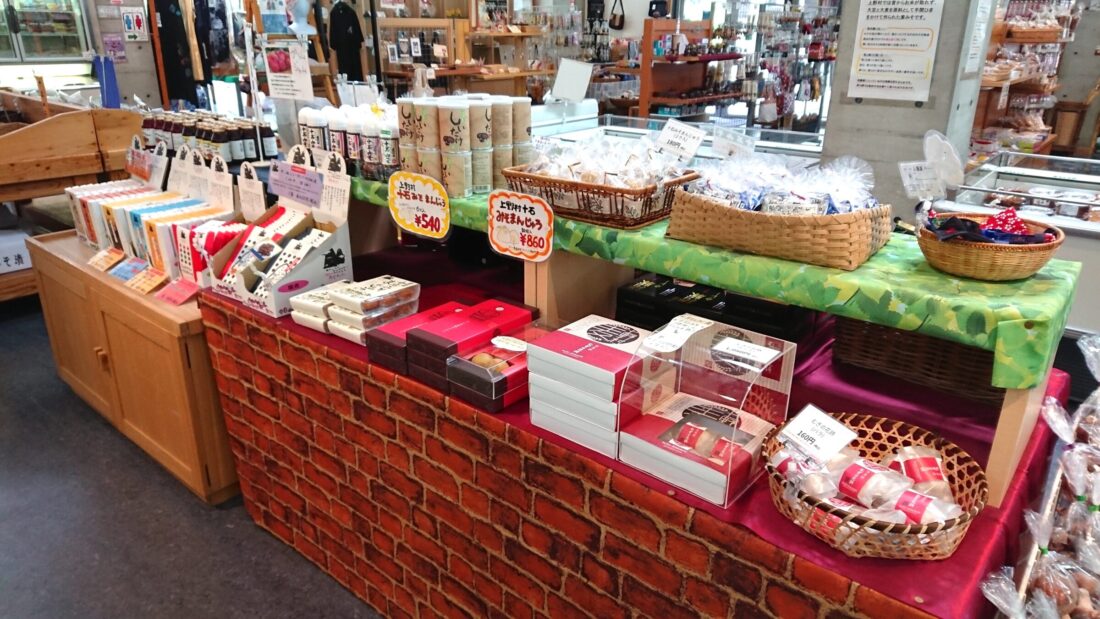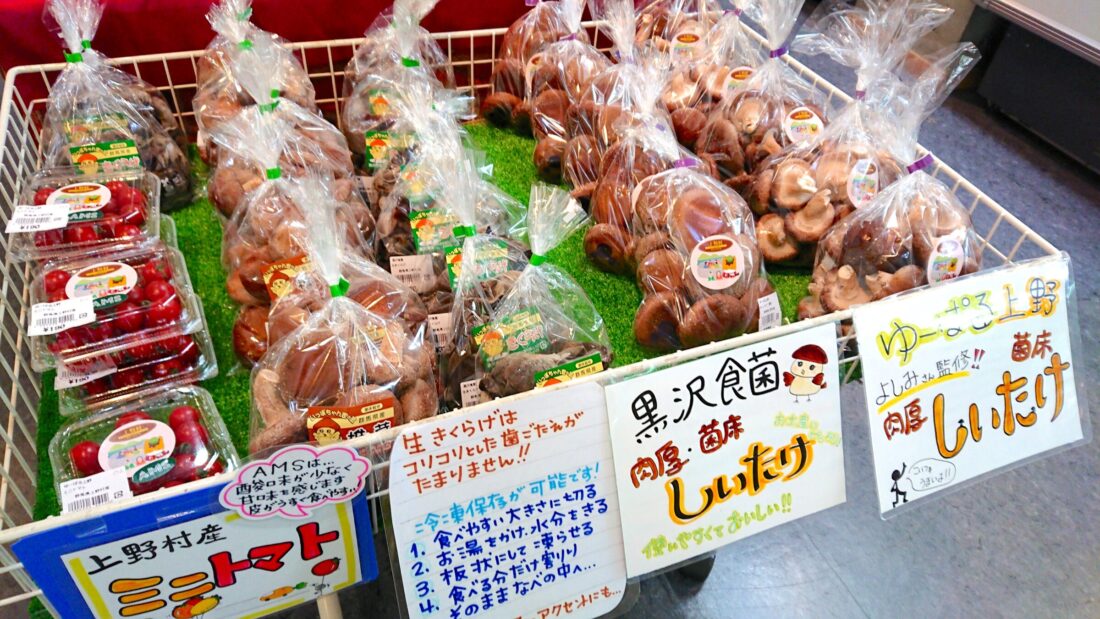The perfect 1-day itinerary for anyone who wants to experience the local culture and history of a small Japanese village at a relaxing pace.
- Former Kurosawa Residence
- Make Your Own Miso at the Kawa no Eki Riverside Visitors Center
- Shiroi Rest Hut and historic settlement
- Lunch and spa at Shioji no Yu Hot Springs
- Souvenirs at Kawa no Eki gift shop and Craftman Shop Kokage
Former Kurosawa Residence
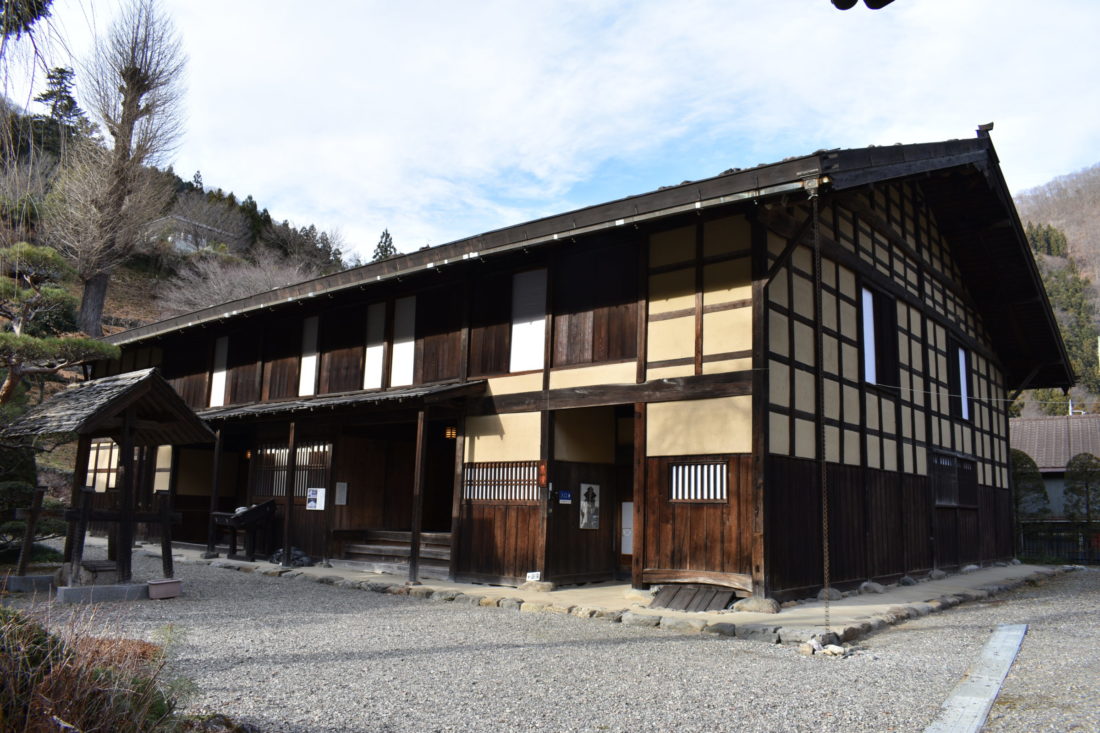
Our first stop was a historical building that used to be home to the Kurosawa family. This powerful family represented the village during the Edo Period when it was under the direct jurisdiction of the Bakufu government.
The residence was built in the nineteenth century and is a designated national important cultural asset. It has many characteristics of architecture of that era, such as its ishioki-bukiya roof covered in stones.
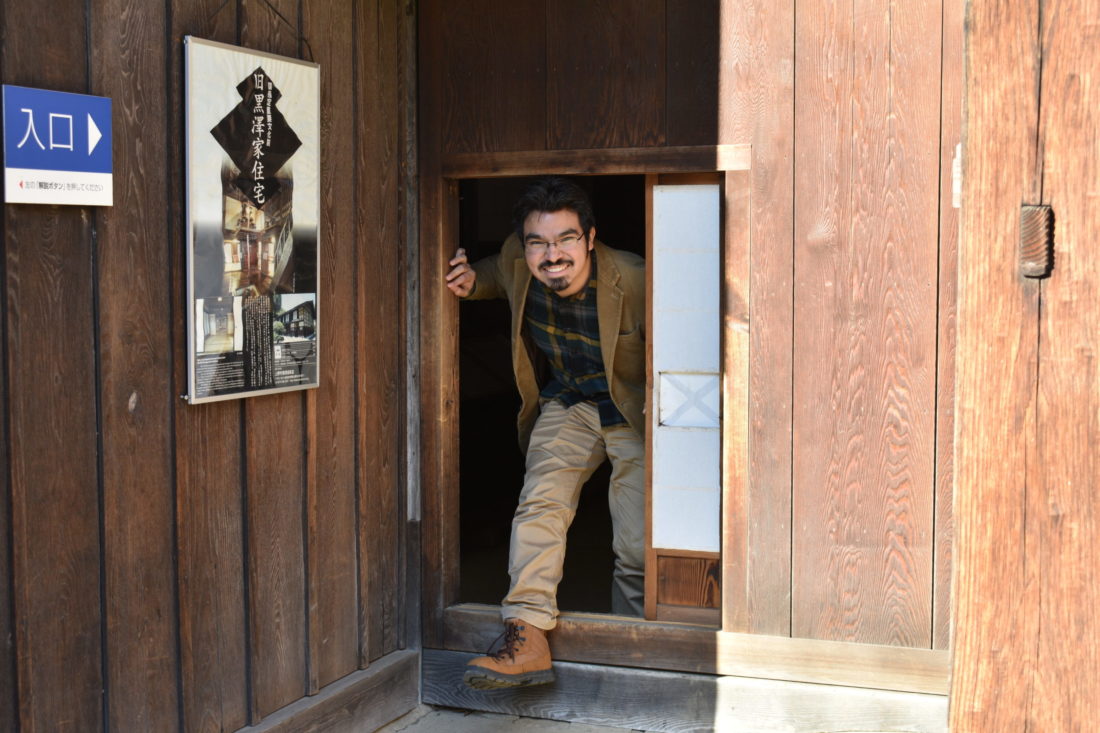
Watch your head going in!
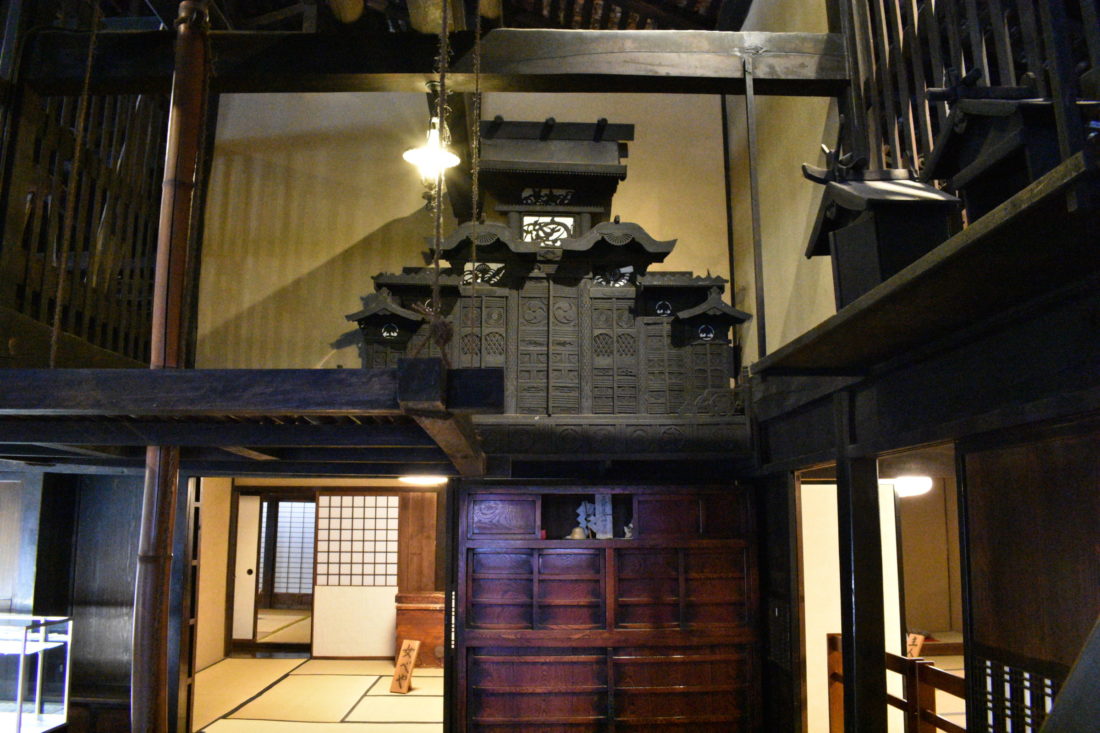
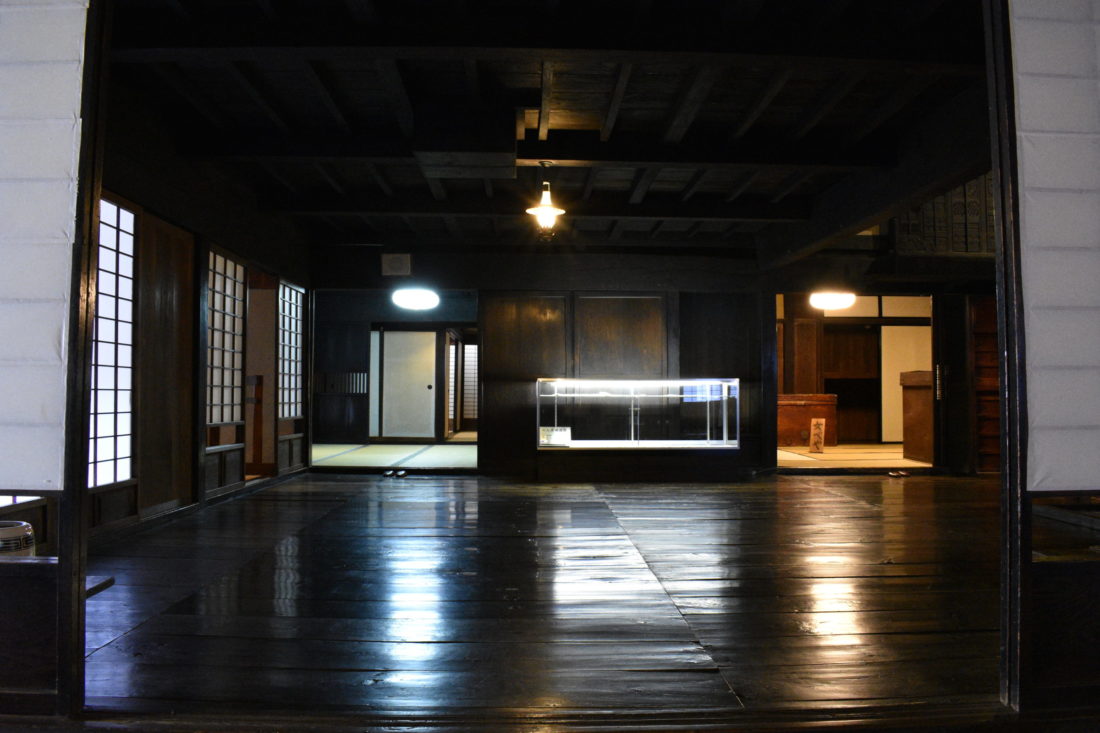
The residence has been kept in excellent condition, making it a rare opportunity to see an Edo-period residence much as it was when it was originally erected.
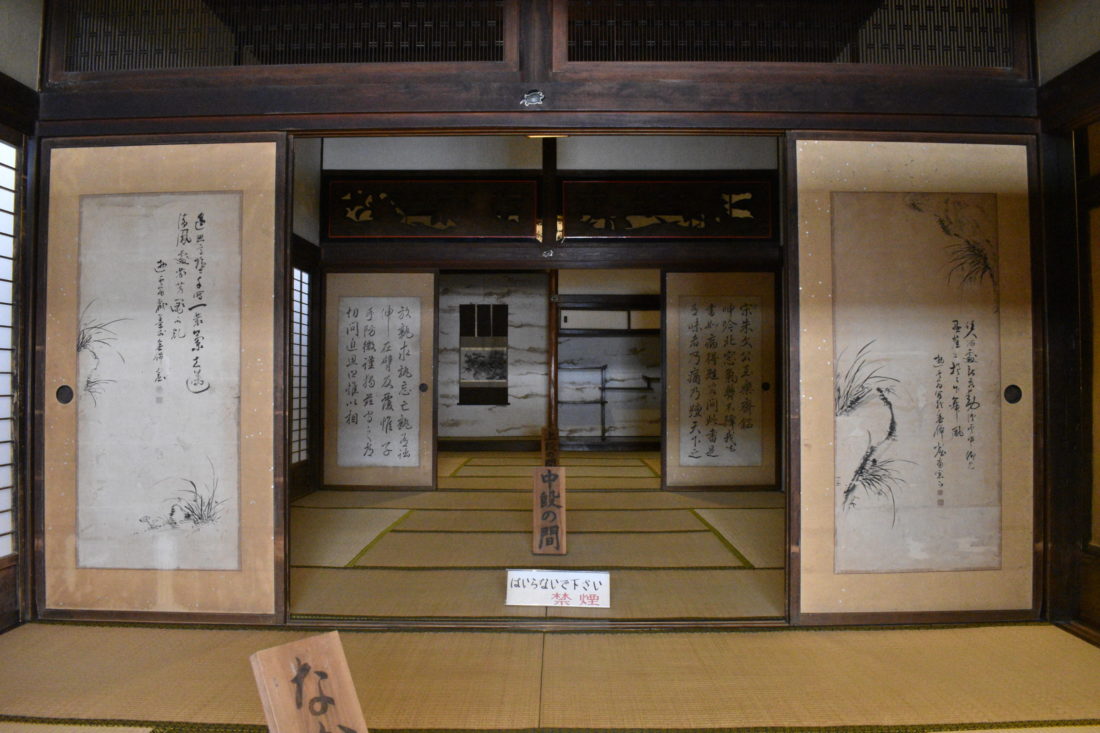
The sliding doors are gorgeously decorated with calligraphy, and the second floor is filled with historical artifacts and silk-reeling equipment used in the past.
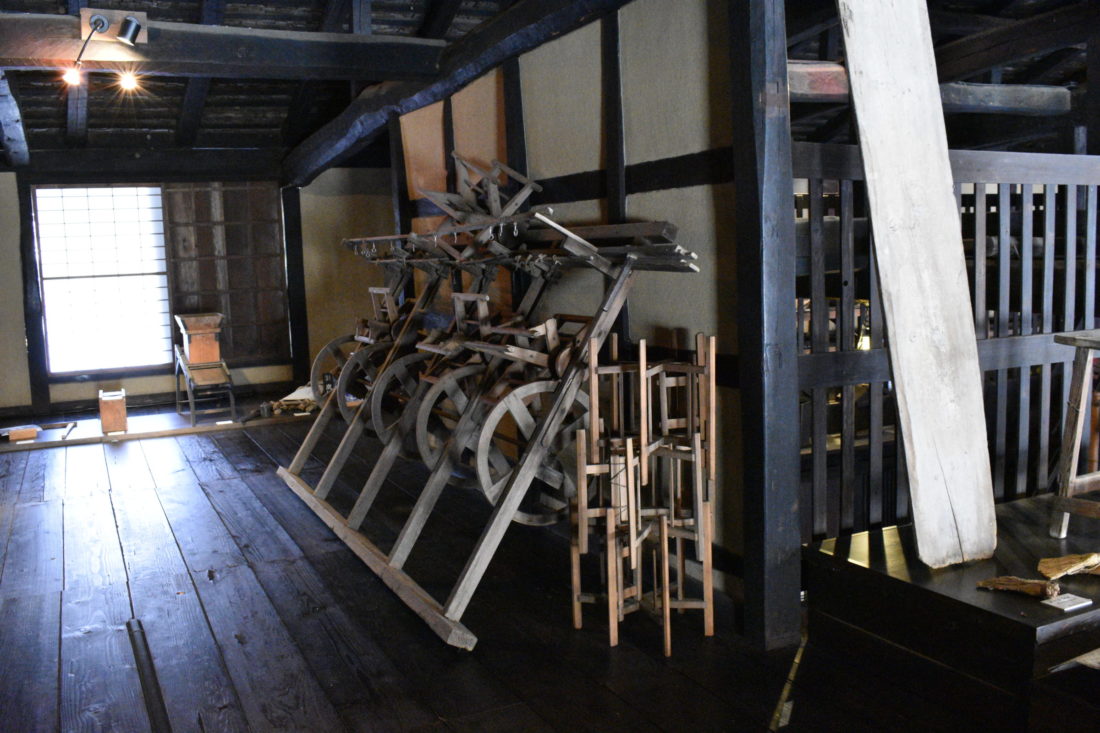
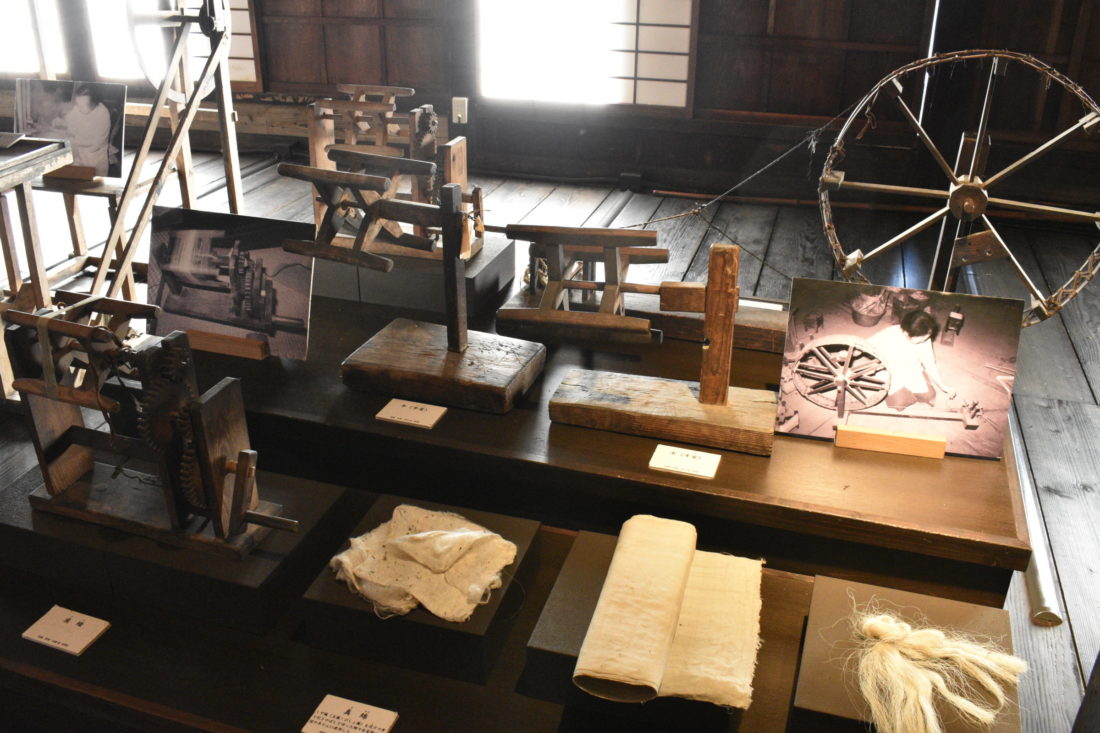
In the past, Gunma produced and exported silk all around the world. Though no longer the powerhouse of textile production it once was, you can still experience some of its history here at the Kurosawa Residence.
Former Kurosawa Residence
| Address | 200-9 Narahara, Ueno, Tano District, Gunma 370-1617 |
| TEL | 0271-59-2657 |
| Hours | 9:00 AM – 4:00 PM Closed on Wednesdays |
| Entrance fee | Adults ¥300 Children in elementary and junior high school ¥100 Groups (20 or more) Adults ¥200 Children in elementary and junior high school ¥80 |
Make Your Own Miso
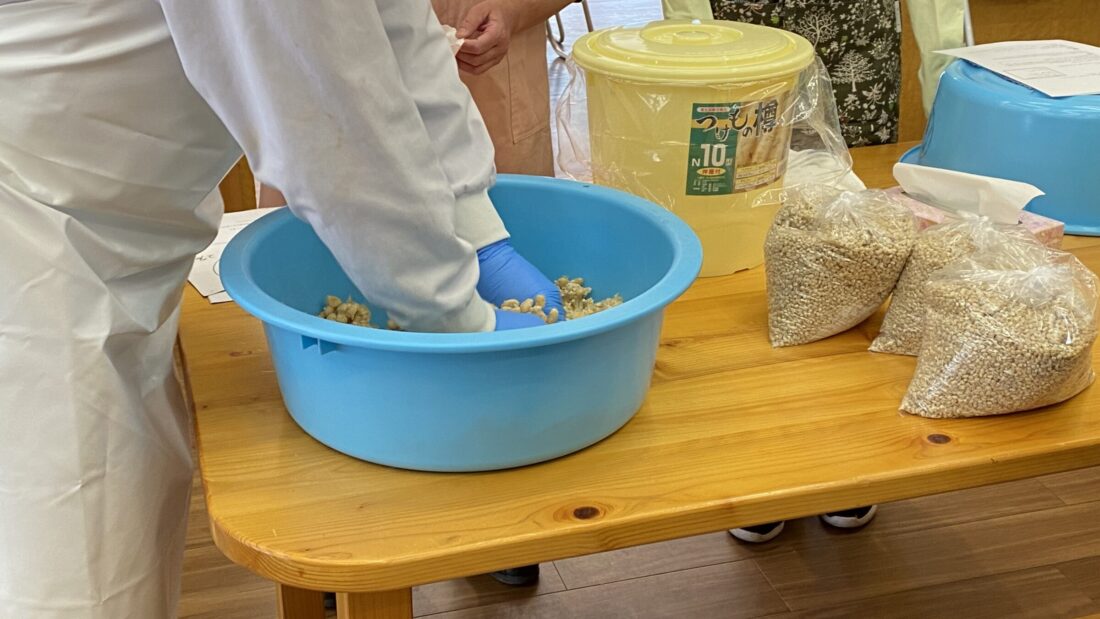
Miso paste is a staple all over Japan. It’s used to make miso soup, as a seasoning or ingredient for sauces, as a marinade—it’s quite versatile! Uenomura’s local version made with wheat and soy is particularly delicious. In times past, villagers used to make their own miso every year, rather than buying it at a store. Today, the Kawa no Eki Riverside Visitors Center offers miso-making sessions for families and individuals who want to make sure the miso they use is all-natural and completely their own. The sessions are open to everyone, and miso-making can be a great opportunity to learn about traditional Japanese cooking—then bring your miso home and taste it for yourself!
The miso making happens in the Mori no Taiken-kan activity building within the visitors center plaza. The sessions are held in February and March, with several weekend dates and times to choose from. Make sure to register in advance by calling the Local Industry Information Center (上野村産業情報センター), or inquiring at their office within the activity building. You can choose between making 3 kg or 10 kg of miso—we opted for 3 kg, and even that was plenty. It’s too big of a bucket to take home on a plane, so we recommend this activity for people staying in Japan long term.
They supply all the ingredients and equipment you need, so all you have to do is show up with some thick rubber gloves and an apron. (We bought our gloves from 7-Eleven that morning.)
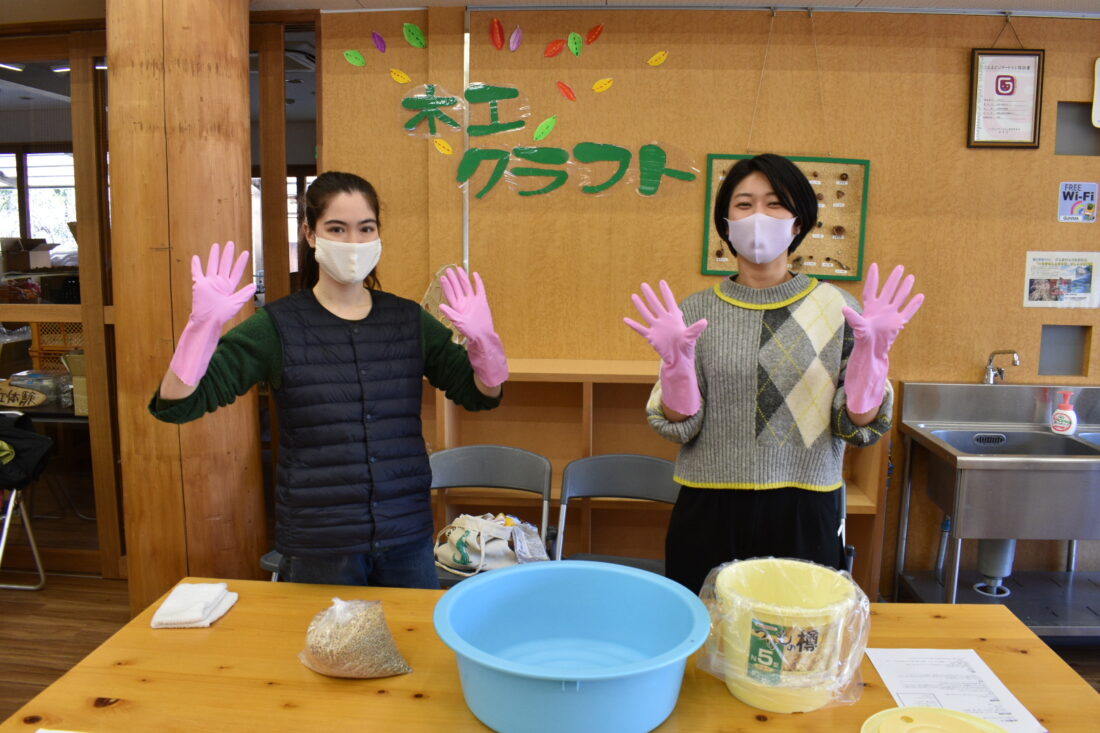
We started by measuring out exactly 2 kg of boiled soybeans. The organizers had already boiled and strained the beans.
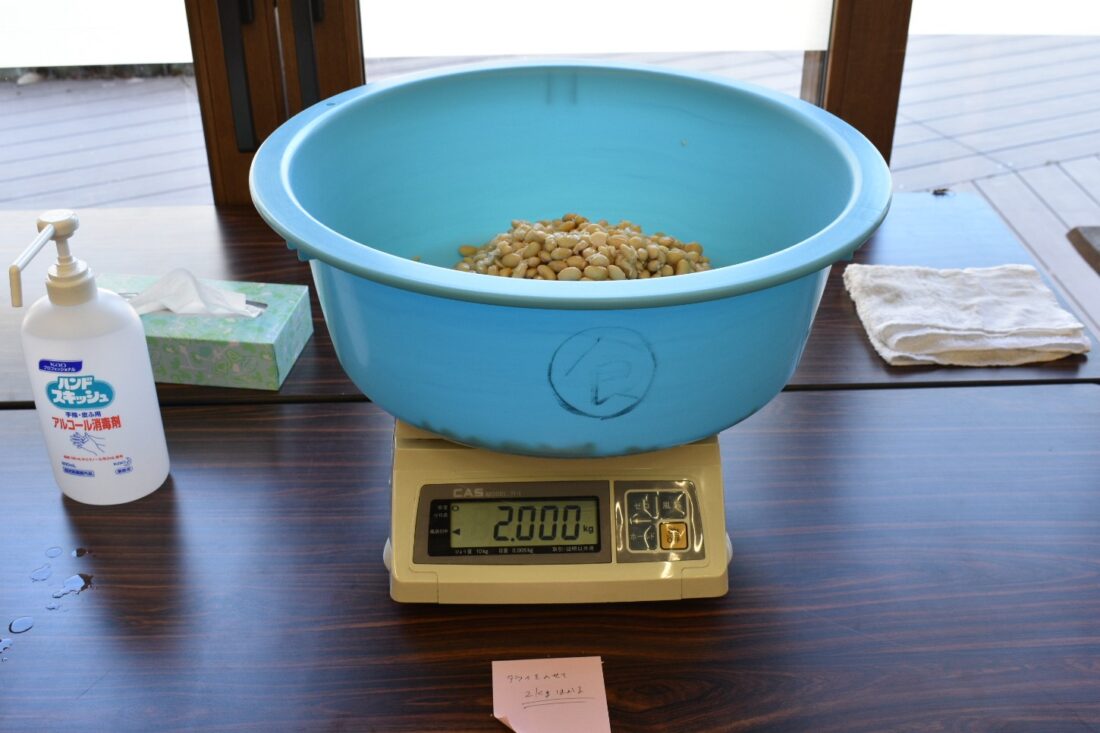
Next we mashed them up with our hands, squeezing and squishing until all the beans had been broken down. This part is very satisfying.
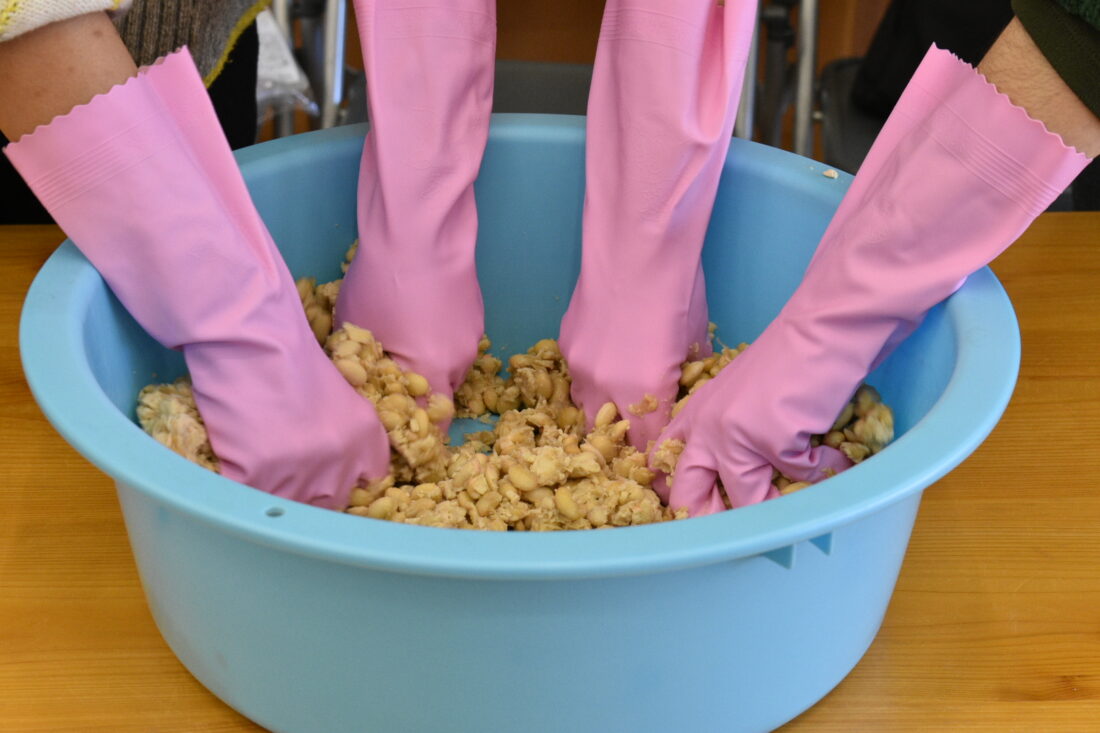
Add in a mixture of salt and wheat koji, i.e. wheat that has been dry fermented via a traditional Japanese method. While some types of miso use koji made from rice, this particular area historically doesn’t produce a lot of rice, so the Uenomura style uses wheat instead. The less common grain gives it a unique local flavor.
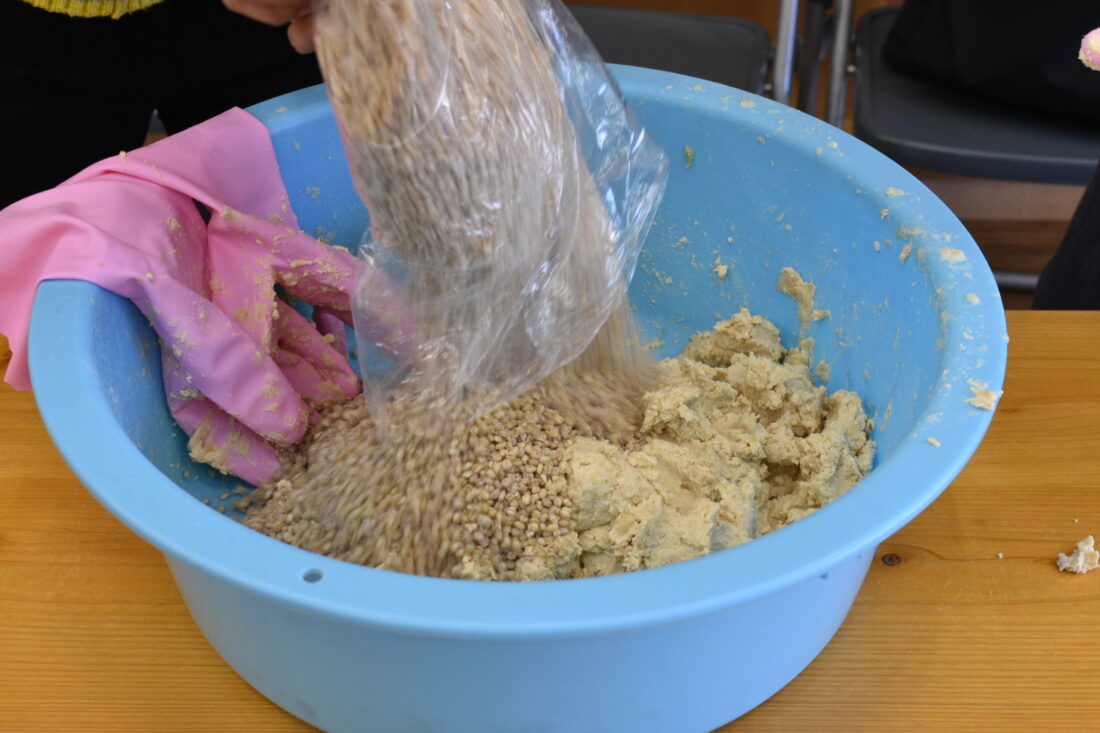
Mash it all up some more, until the wheat koji is fully mixed in. Then ball up handfuls of the mixture and transfer to a bucket lined with a plastic bag. Squish the balls one by one into the bottom of the bucket. This process, as well as the plastic bag lining, is all to ensure that no air gets trapped inside the bucket. Airtightness will lead to a better ferment, and prevent unwanted molds from growing inside.
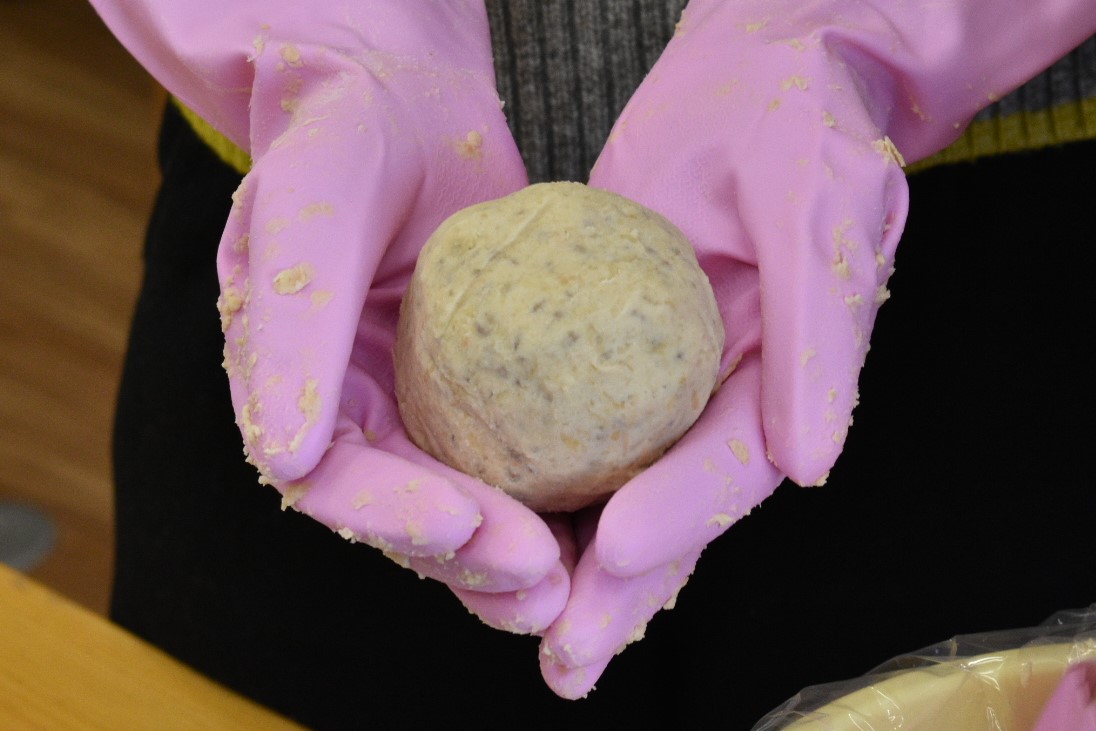
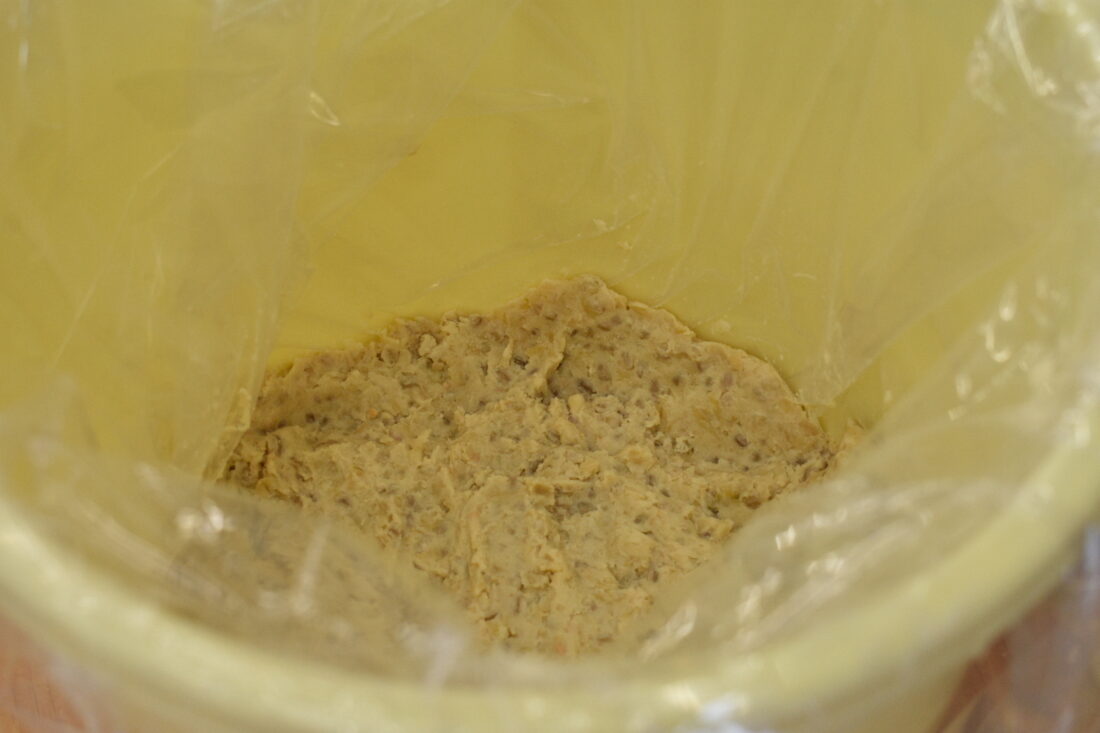
The last step is to seal the plastic bag, grab a heavy rock from the river outside and rest it on an inner lid, then put the other lid on top of that.
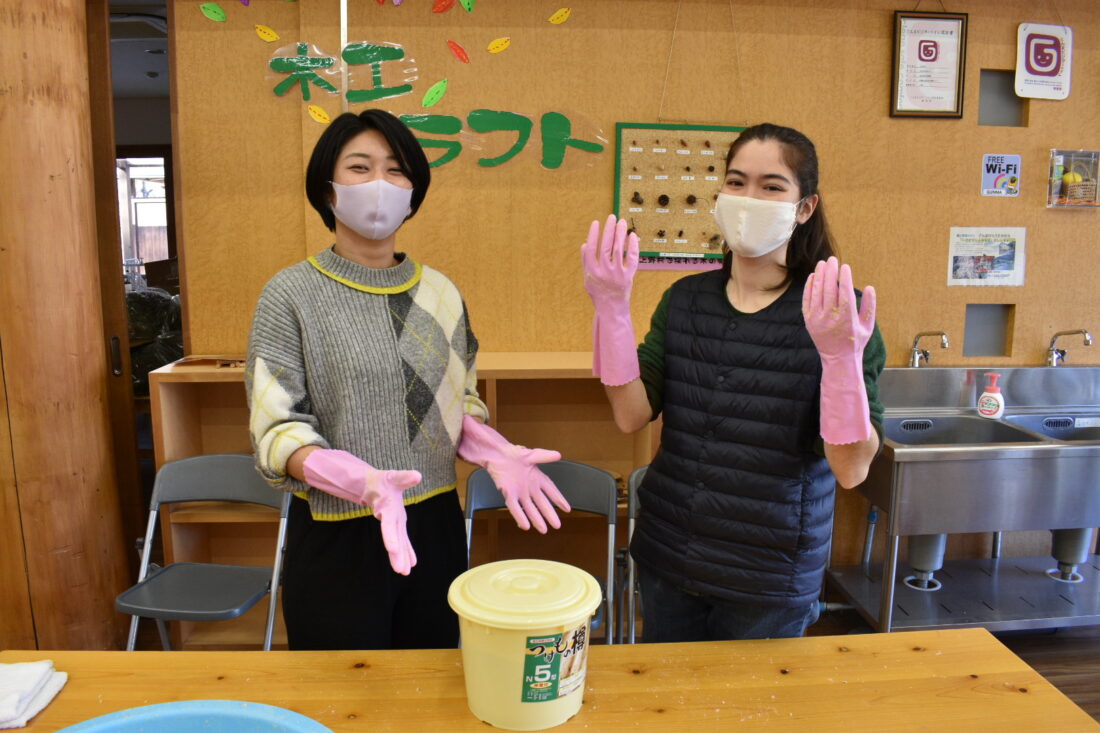
Tada! Take the bucket home and store it at room temperature, away from direct sunlight, in a well-ventilated spot if possible. It will be ready to eat in about 6 months. Once it’s fully fermented, section into smaller portions in plastic bags and store in the fridge.
What will you make with your very own miso? See here for some recipe ideas: https://www.bbcgoodfood.com/recipes/collection/miso-recipes
Kawa no Eki Riverside Visitors Center:Mori no Taiken-kan activity building
| Address | 310-1 Narahara, Ueno, Tano District, Gunma 370-1617 |
| TEL | 0274-20-7070 |
| Hours | Fri – Wed: 9:00 AM – 4:30 PM (reception desk closes at 3:30 PM) Thu: Closed |
| Reservations accepted by phone 9:00 AM – 5:00 PM |
Event schedule and other info here: http://www.uenomura.jp/tourism/play/morinotaikenkan/index.html
Shioji no Yu Hot Springs
This cozy and laidback day spa was a great place for lunch and a bath.
Options for lunch include curry, udon, soba, and set meals. Most of the cuisine features Uenomura’s specialty inobuta meat, which is a cross between a pig and a wild boar. I had some inobuta udon noodle soup. The meat tastes like pork, but richer! My colleagues went for ramen and curry.
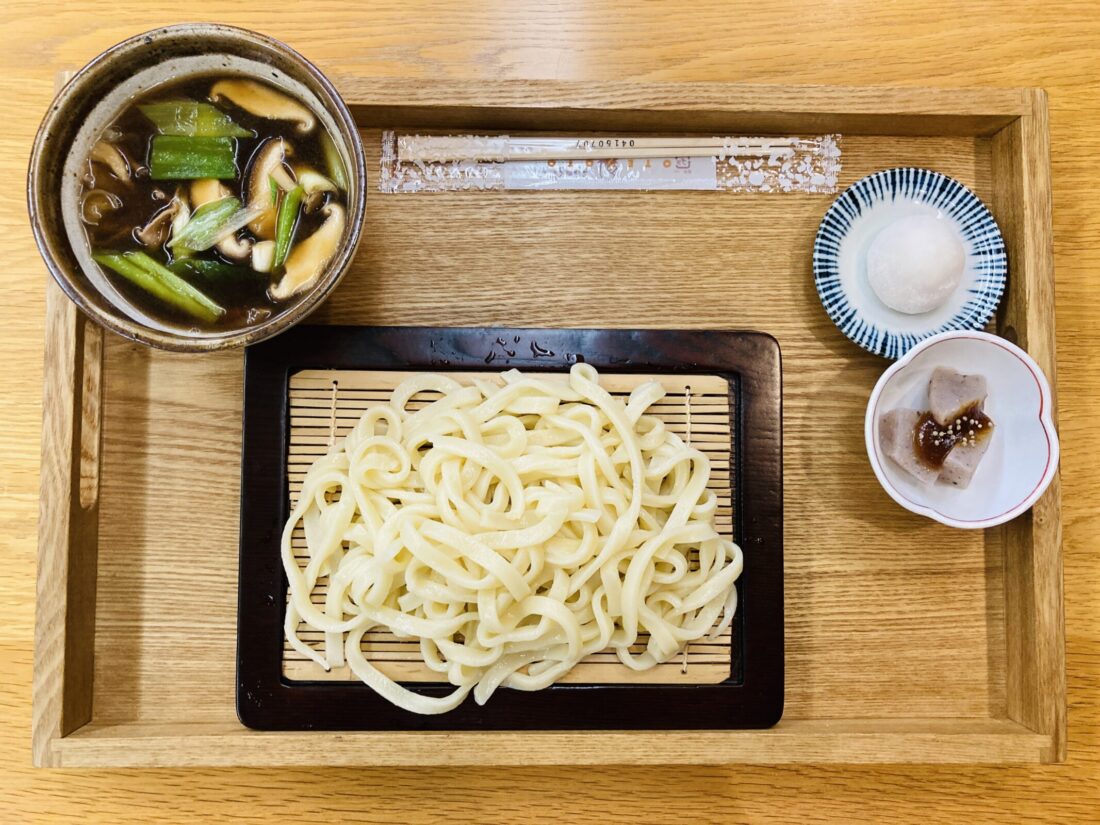
Udon Noodles with Inobuta Soup
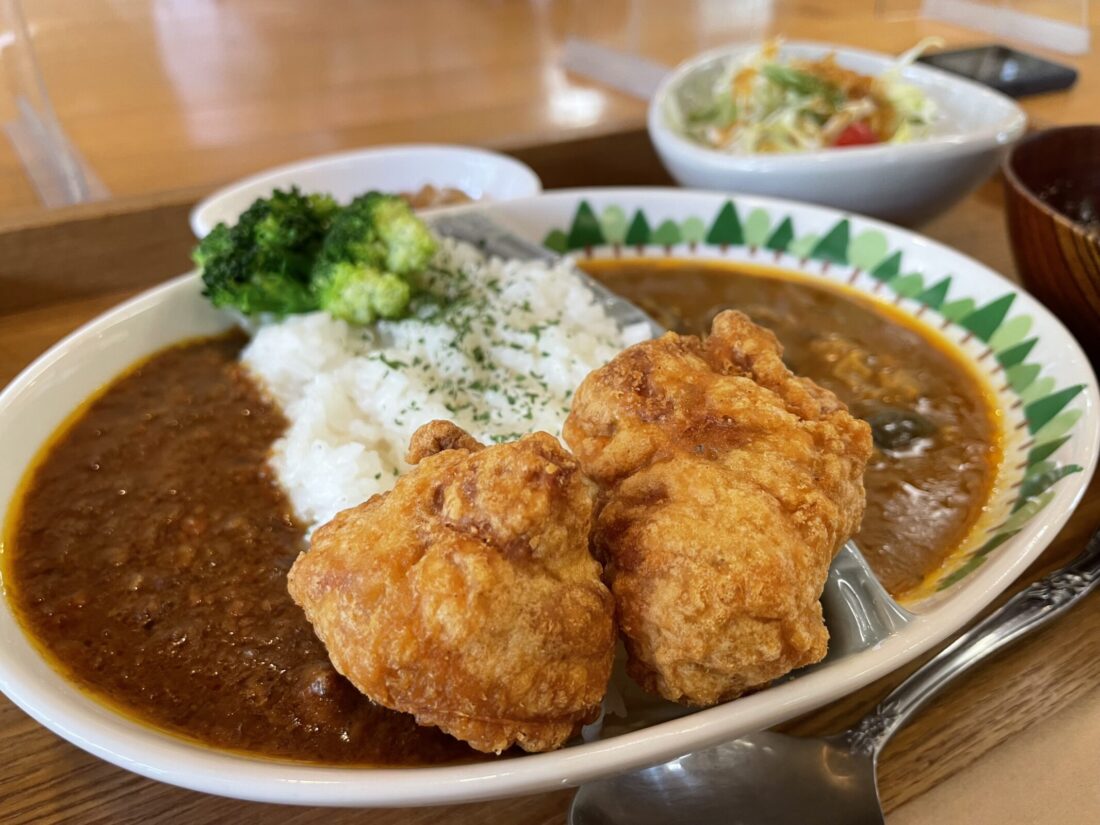
Ueno Dam Curry
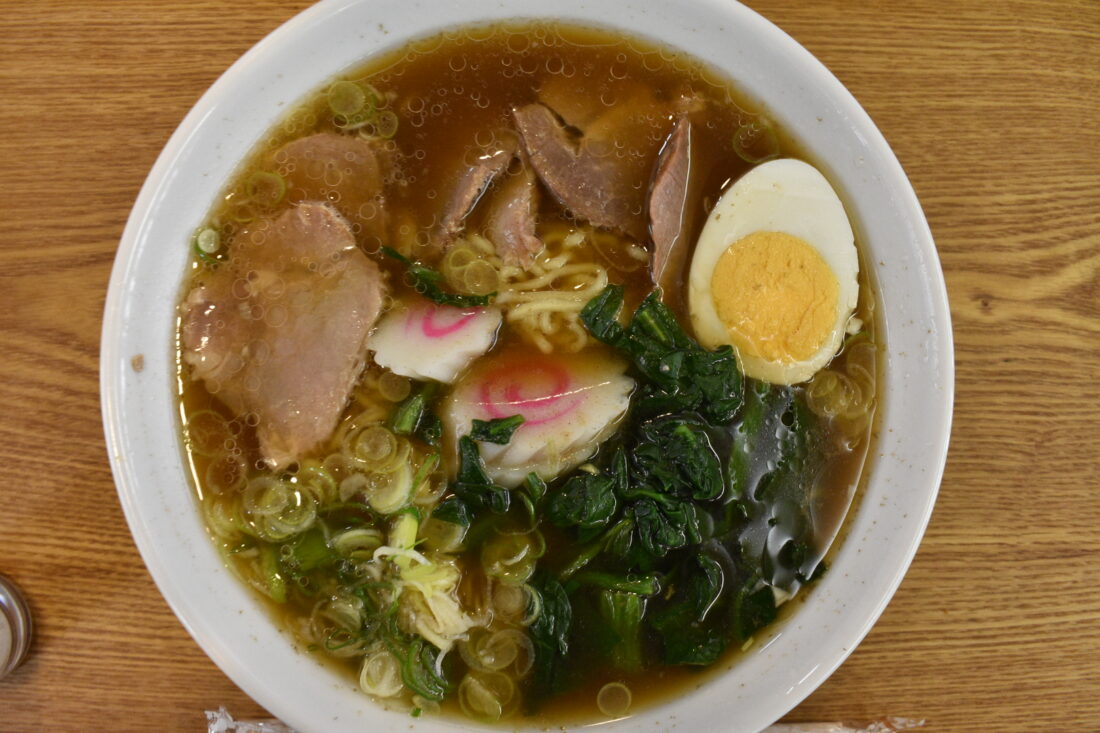
Roast Inobuta Pork Ramen
The dining area is a Japanese-style lounge with tatami mats and floor cushions. There’s also a section with chairs and tables that looks out at the river.
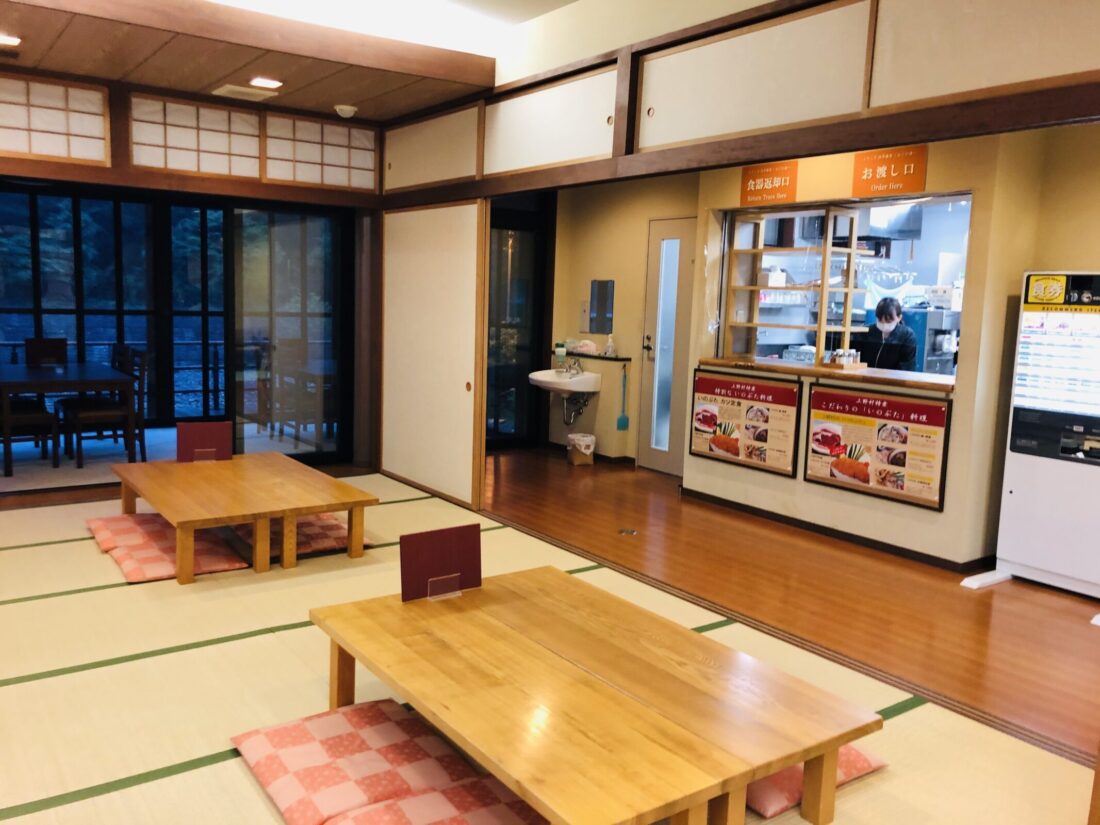
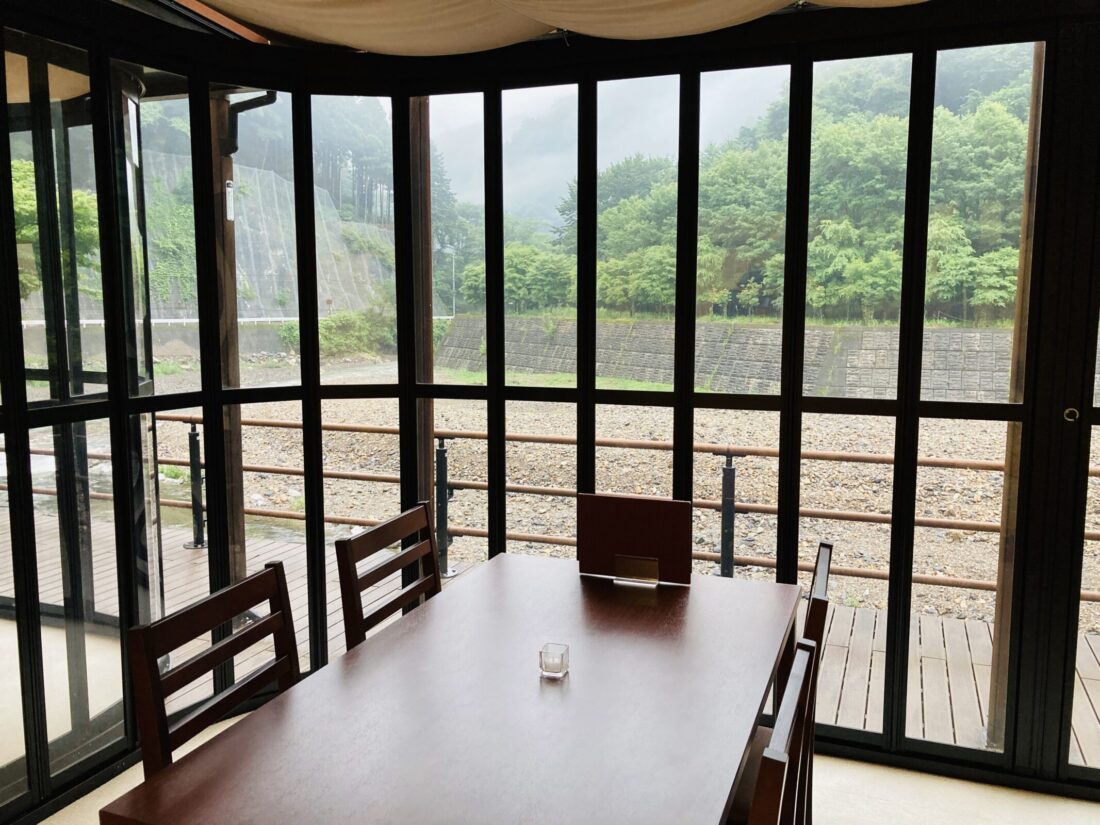
The hot spring bath was quite spacious. There were enough shower stations to accommodate about 10 people at once, and a large indoor bath. There was also an outdoor bath with a view of the mountains—I liked this one because it was lined with cool-looking red rocks.
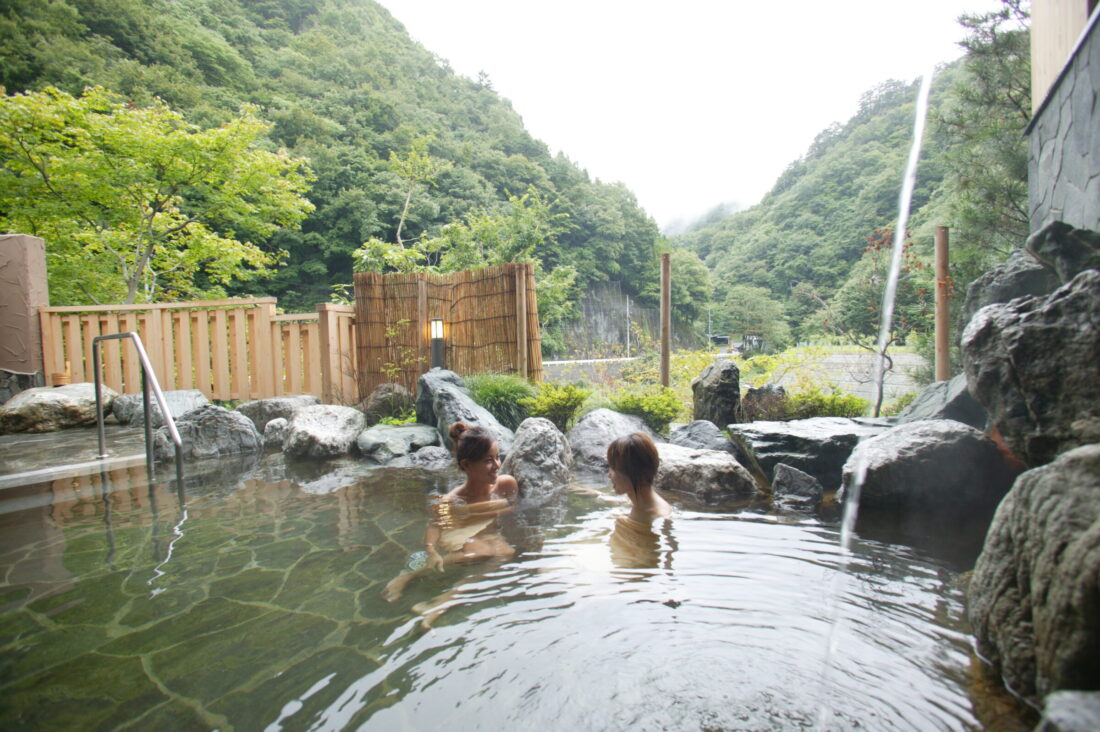
露天風呂
The water was nice and hot on a chilly winter day. This particular hot spring water has a high concentration of minerals that are good for your skin.
Soap and shampoo are provided, but no conditioner, so make sure to bring your own if you want. Also, as like most hot springs in Japan, you’re expected to bring your own towel. If you forget, though, you can buy a long hand towel for 200 yen.
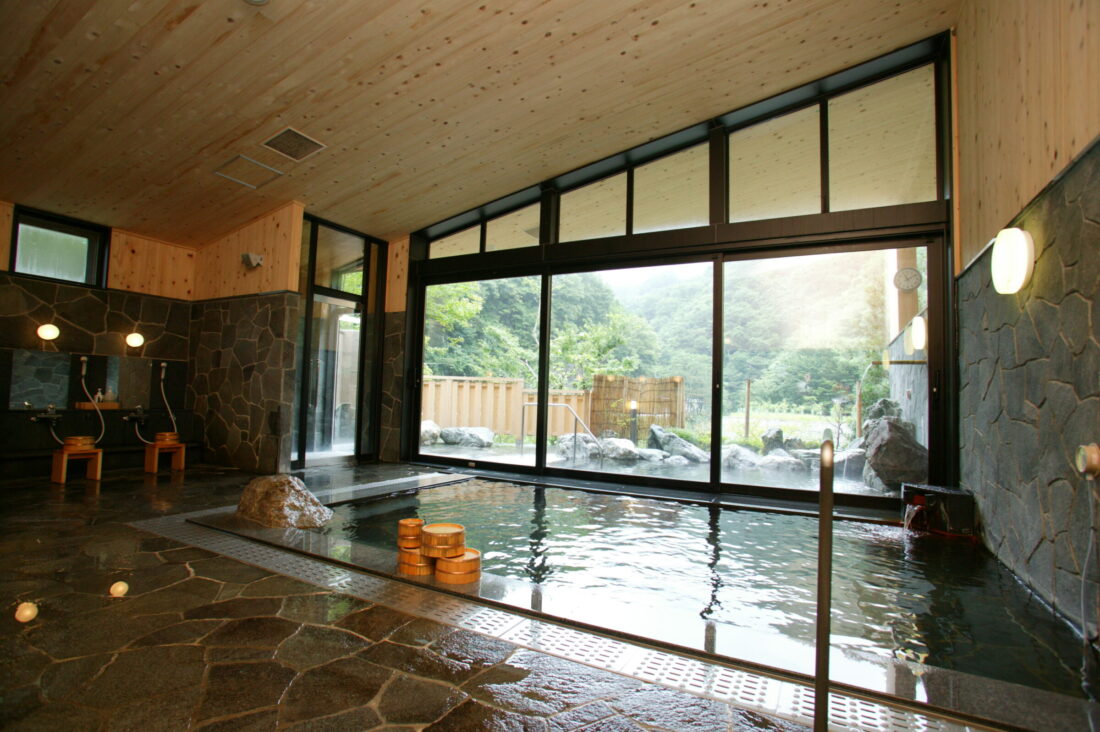
大浴場
Shioji no Yu hot springs
| Address | 3487-2 Narahara, Ueno, Tano District, Gunma 370-1617 |
| Hours | Wed – Mon: 11:00 AM – 8:00 PM (last entry 7:30) Tues: Closed *When Tuesday is a public holiday, the facility will be open on that Tuesday and then closed the next day. *Irregular closures during winter. *Hours may have changed due to COVID-19. |
| Price | Adults (12 – 69 years old) ¥600 Children (3 – 11) ¥400 Seniors (70+) ¥500 |
| Website | https://www.shiojinoyu.com/ |
Shiroi Rest Hut and historic settlement
Our next stop was an old settlement up on a hill. We took a short rest inside a community hut with an old-fashioned Japanese hearth and enjoyed some local homemade snacks. It was nice and warm by the hearth and very relaxing.
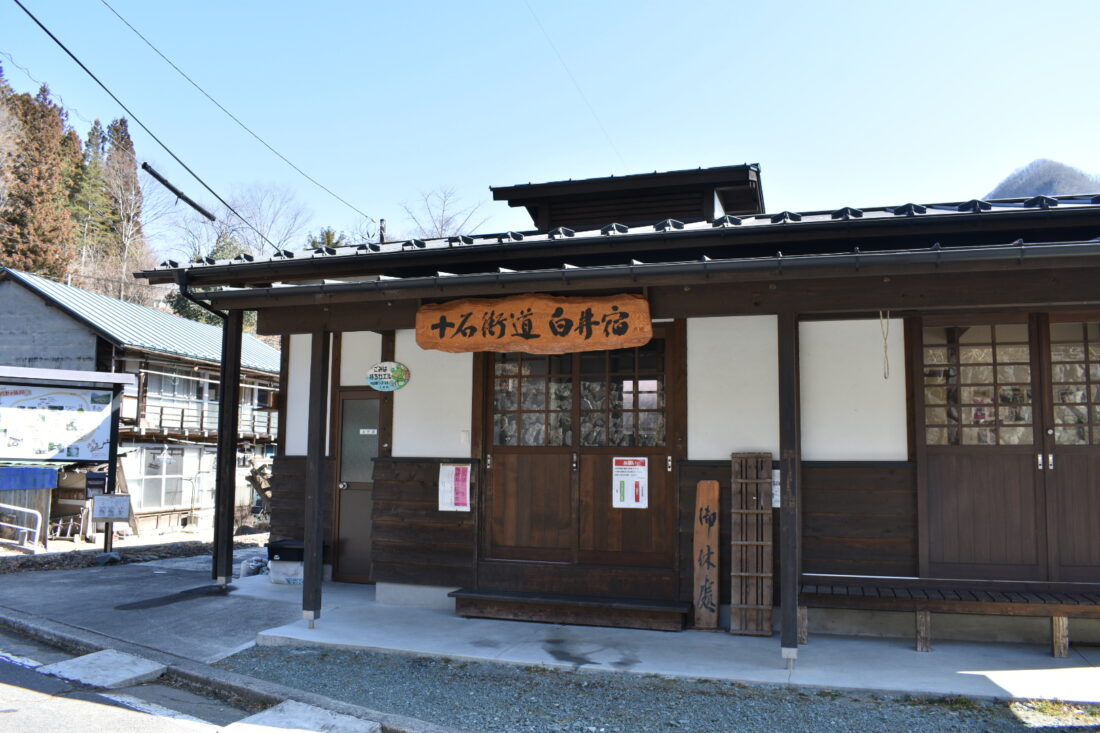
The local treats included dried persimmon, sweet pickled daikon, and potatoes with miso teriyaki sauce. All delicious, and a great way to sample the local flavors.
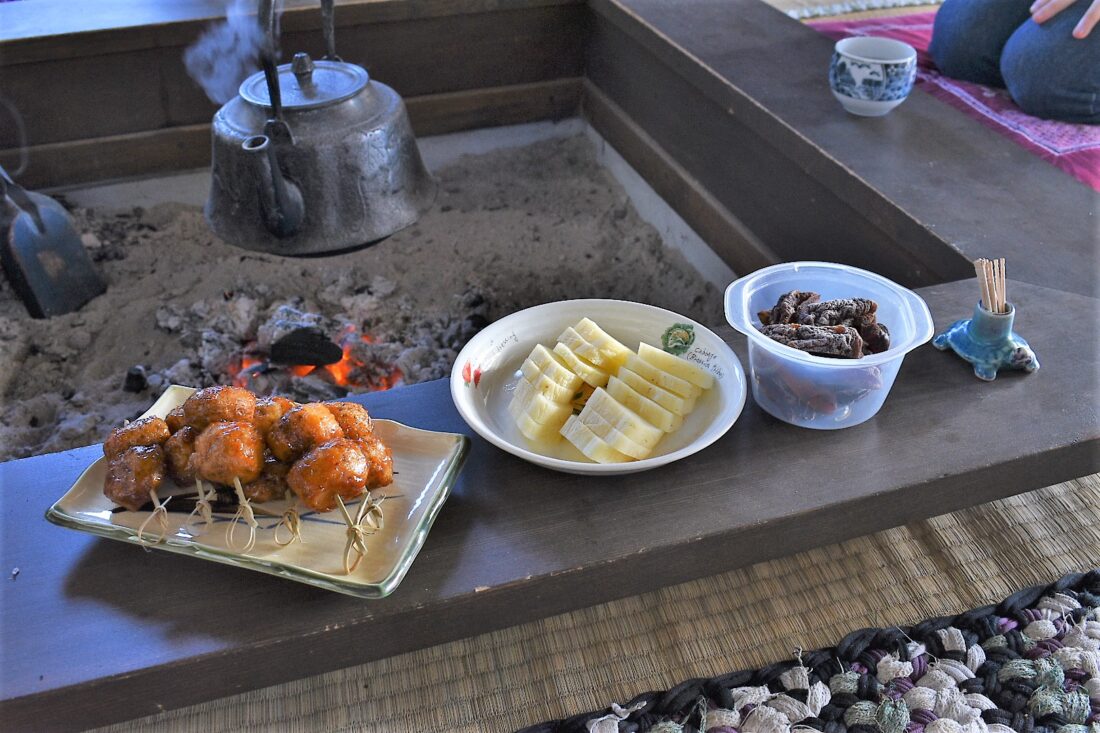
The community hut is not open all the time, so if you’d like to visit and have tea, call the Local Industry Information Center to inquire (see below).
Once we were rested up, we headed out to walk around the settlement. The local legend has it that “hidden Christians” used to live here. At the start of the Edo period in the early 17th century, Christianity was banned in Japan, and the small population of Christians in the country were forced to go into hiding. They developed ways to practice their religion in secret, using what appeared to be Buddhist icons to represent Catholic figures. We got to see several of the symbols they left behind.
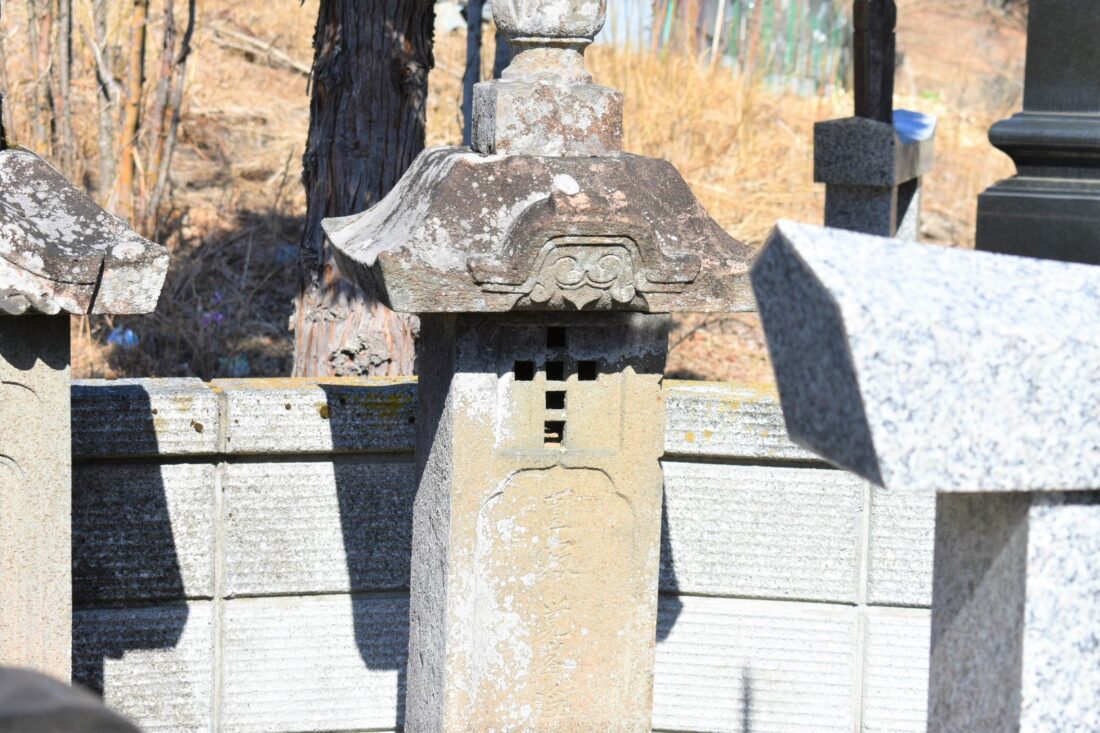
The overall shape of this gravestone is common for a Buddhist cemetery, but it’s got a motif of 6 square holes in the shape of a cross. This is just one example of how the hidden Christians buried their religious symbols under the guise of the dominant religion.
Shiroi Rest Hut
| Address | 1655 Narahara, Ueno, Tano District, Gunma 370-1617 |
| TEL | For inquiries call the Uenomura Local Industry Information Center at 0274-20-7070 |
| Hours | Open irregularly |
Kawa no Eki gift shop and Craftman Shop Kokage
With our bellies full and our bodies rested, we had one last stop at the Kawa no Eki Riverside Visitors Center to pick up some souvenirs before heading home. The visitors center is run by the local fishery association, and the river behind the building has a designated winter fishing area. Make sure to buy a fishing ticket inside before casting your line.
The general gift shop is in the Fureai-kan building with the cafe. You can find local specialty foods like Jukkoku Miso and curry with inobuta pork, all packaged to be easily taken home. There are also bags and accessories handcrafted by local artists. Plus, keychains, mascot characters, and all the usual wares.
Fureai-kan
| Address | 316-1 Narahara, Ueno, Tano District, Gunma 370-1617 |
| Tel | 0274-59-3223 |
| Hours | Mar – Oct: 8:30 AM – 5:30 PM Nov: 8:30 AM – 5:00 PM Dec – Feb: 9:00 AM – 5:00 PM Closed on Tuesdays |
The next building over is Craftman Shop Kokage, with high-quality artisanal wooden products ranging from tableware to one-of-a-kind furniture. Uenomura has an active community of artisans inspired by the village’s vast old growth forest. They use both traditional and innovative techniques to create their beautiful yet practical pieces: lacquered wooden sake cups, chopsticks, plates and bowls; bamboo accessories; coasters, picture frames, baskets and other home goods; all-natural toys with no toxic finishes, and even kits to make your own wooden toys; furniture with designs ranging from chic to bold to whimsical. I would definitely recommend checking it out, even just to take a peek at what’s on display.
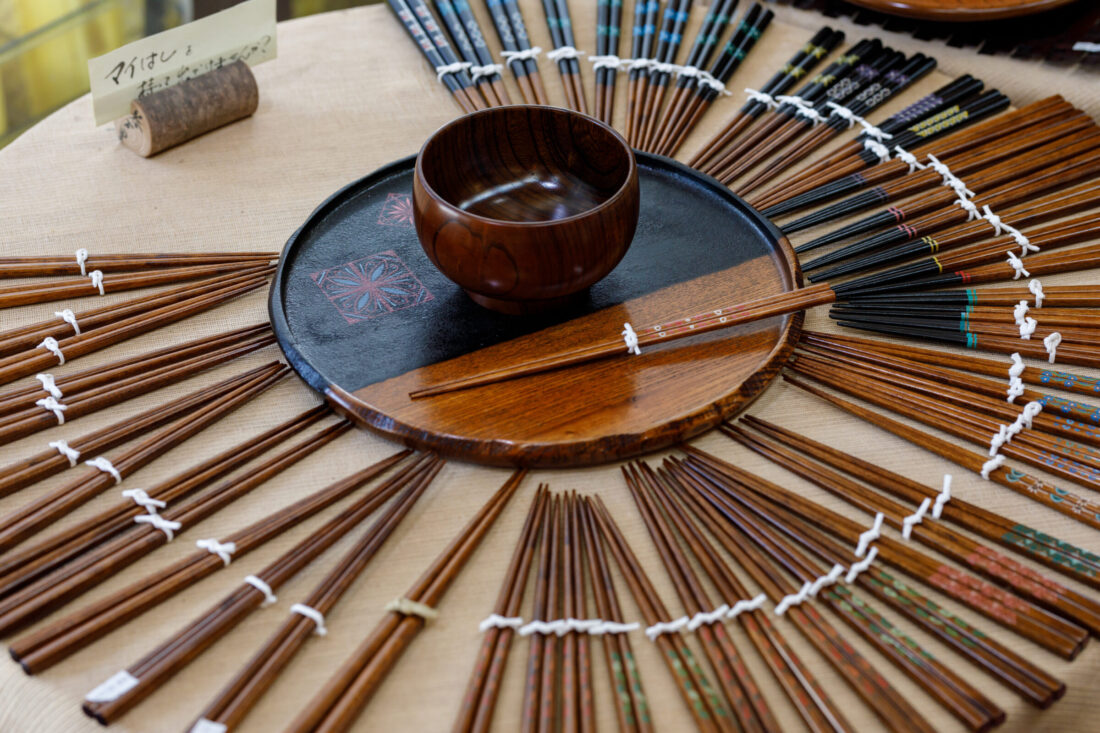
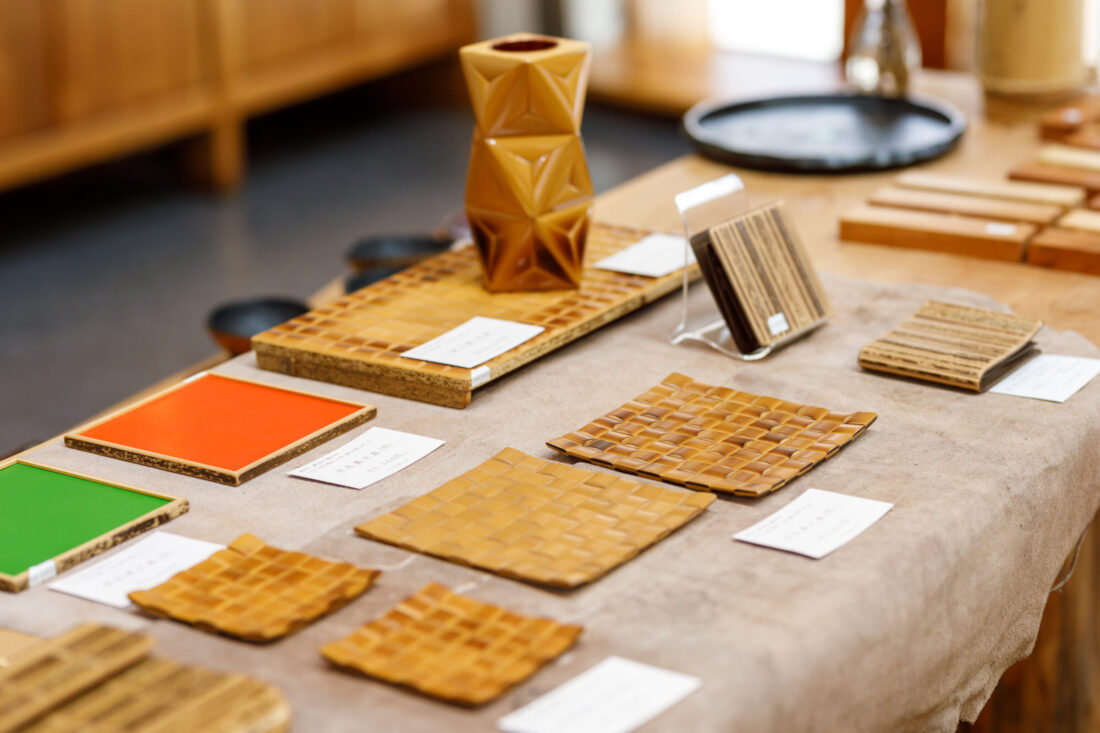

Craftman Shop Kokage
| Address | 316-1 Narahara, Ueno, Tano District, Gunma 370-1617 |
| Tel | 0274-59-2330 |
| Hours | Mar – Oct: 8:30 AM – 5:30 PM Nov: 8:30 AM – 5:00 PM Dec – Feb: 9:00 AM – 5:00 PM Closed on Tuesdays |
More Winter Itineraries
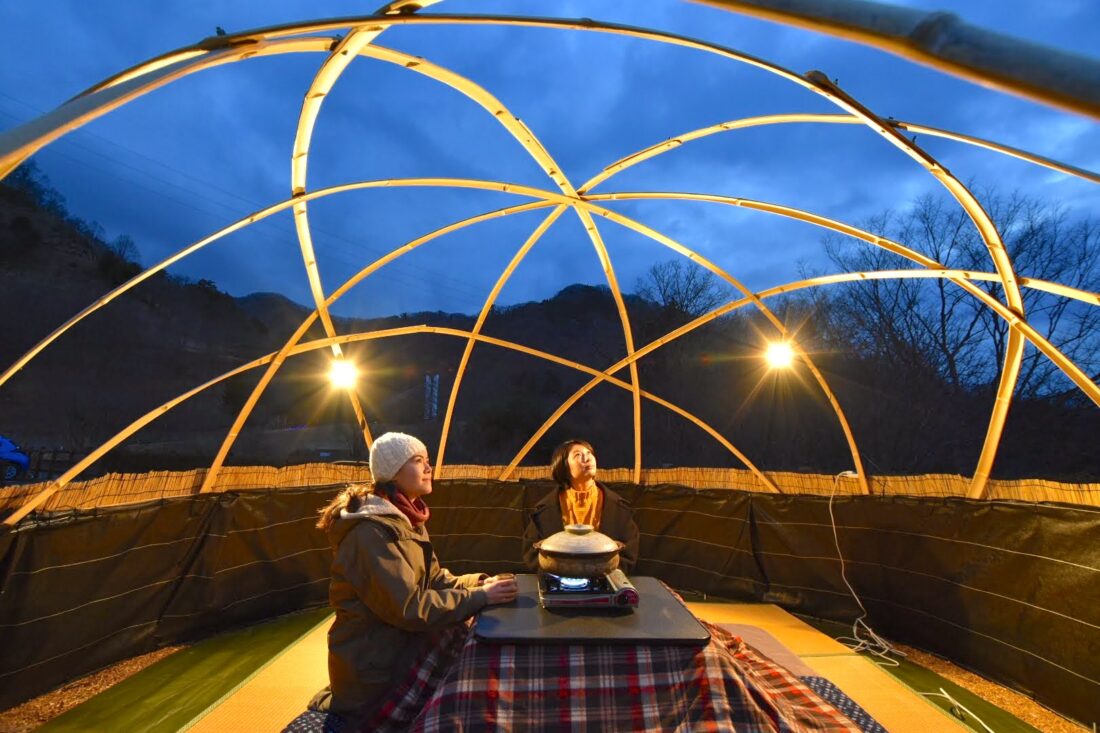
Family Weekend Getaway in Uenomura – Winter Edition
Strawberry picking, snowless tubing, and nabe hotpot under the stars–plus make-your-own holiday wreath, and more!
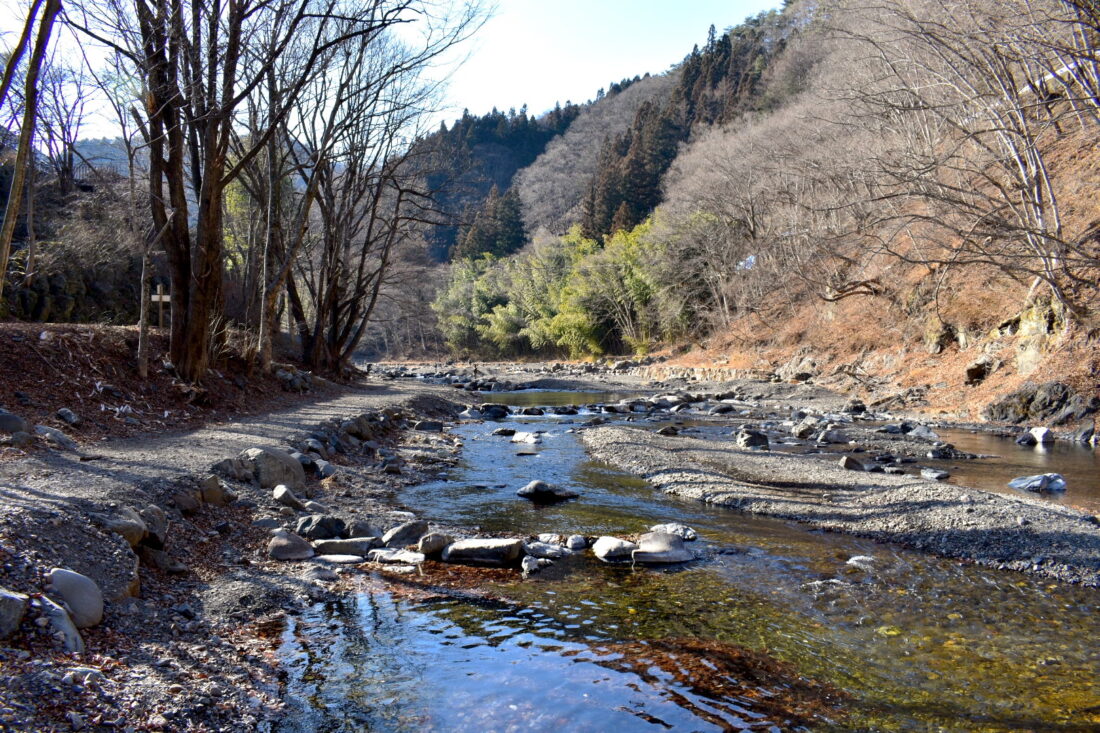
Embrace the Cold! 2-Day Winter Itinerary in Uenomura
See a frozen waterfall, catch some winter river fish, and try your hand at airsoft at an outdoor game field.
